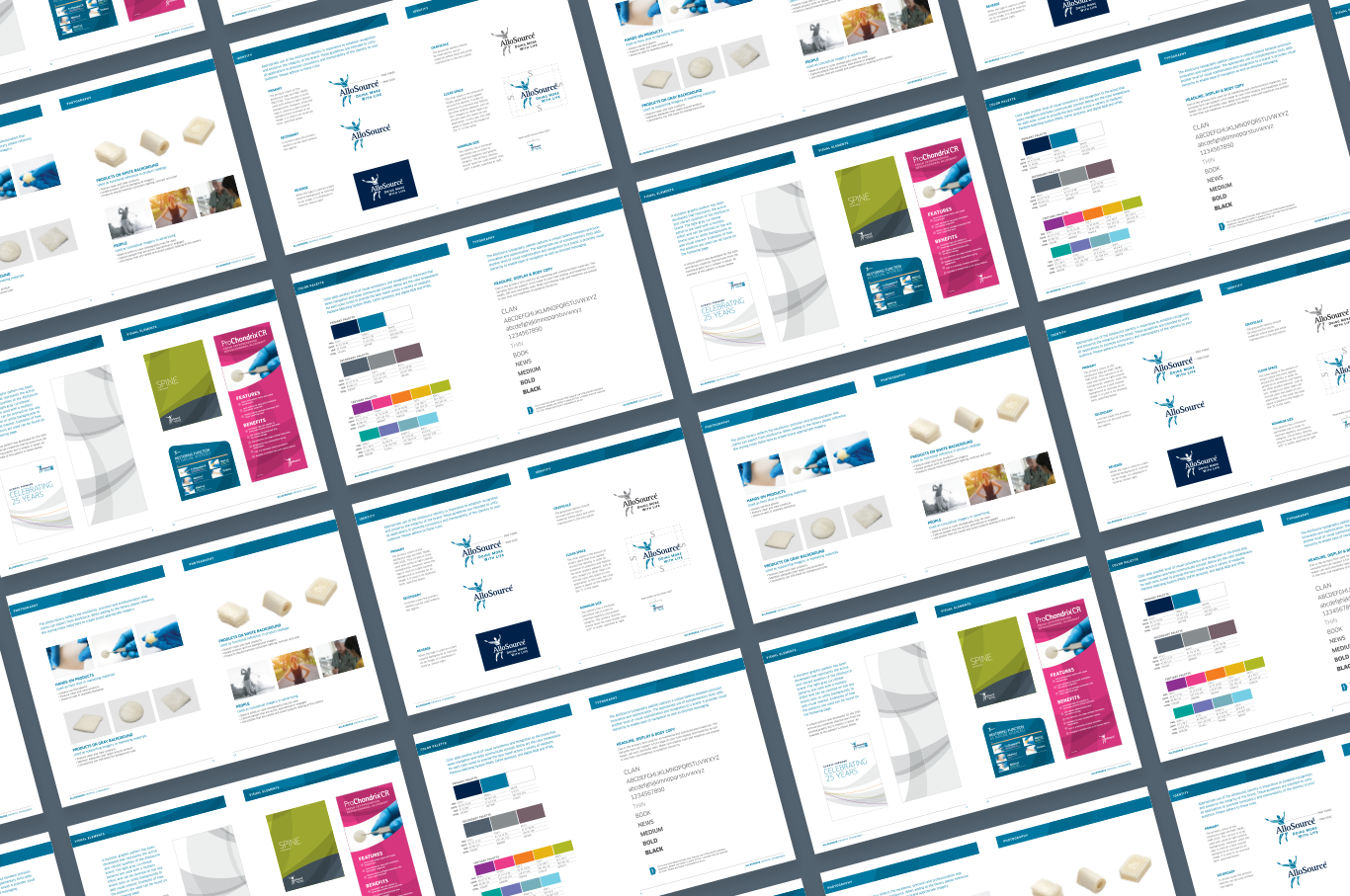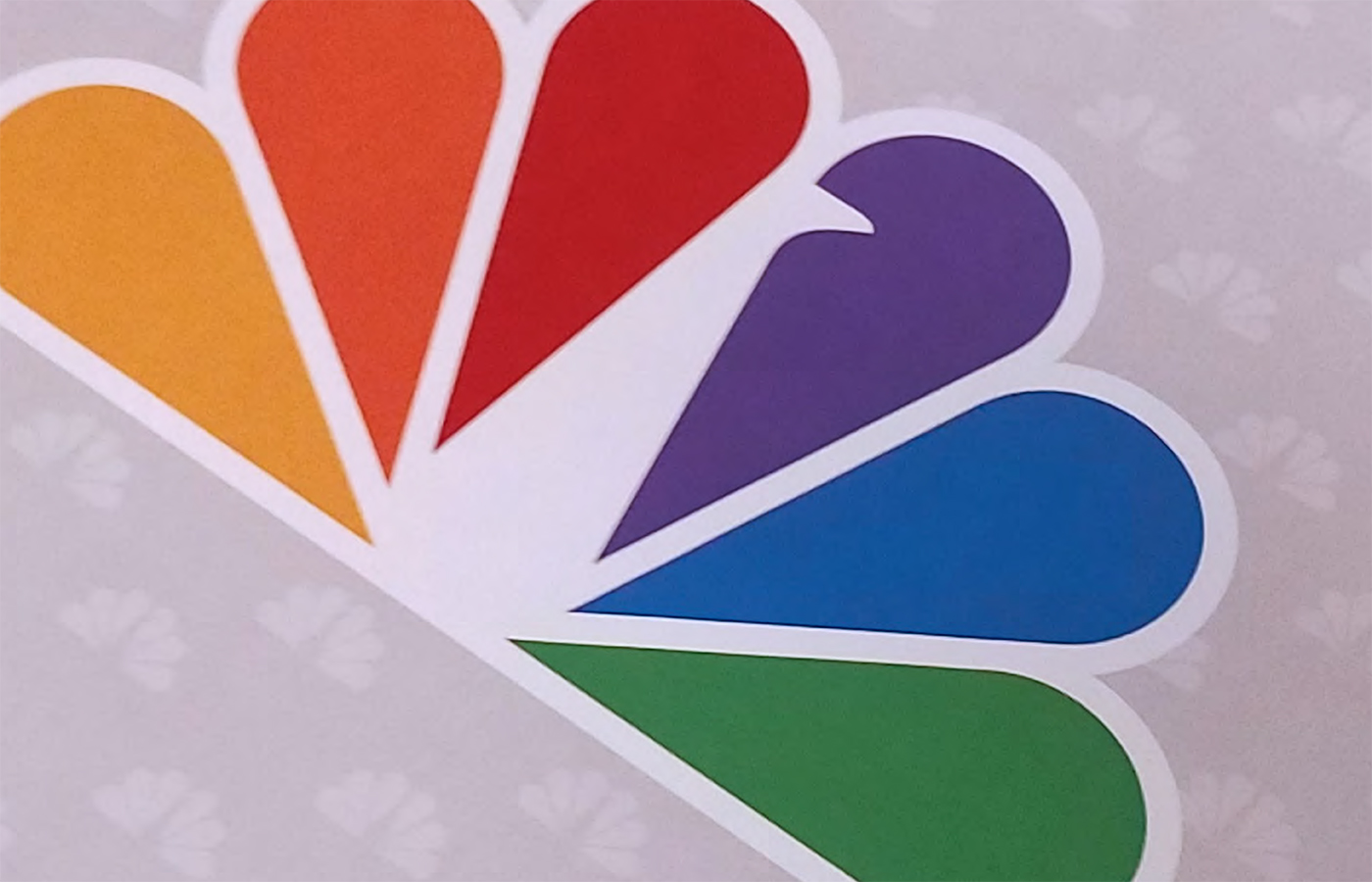Effective B2B Branding
Let’s talk business.Your business.
We have worked with just about every business model in the B2B space over the past two decades. Be that professional services, manufacturing, architecture, commercial real estate or financial services. With such a vast sampling, we’ve picked up some valuable insights into successful B2B brands along the way.
This article is meant to help CEOs, marketing managers and B2B business owners begin to think about their company value proposition, their ability to differentiate and how they might leverage a strong brand to build their business.
Defining brand
‘Brand’ may be the most ubiquitous and misunderstood business term in today’s B2B environment. For the purposes of this document, we will start with Walter Landor’s definition.
“Products are made in the factory, but brands are created in the mind.”
This is ultimately saying that the typical tangible brand assets that the majority of the public think of when hearing the word ‘brand’ (name, logo, product, advertisement) can be effectively managed by a marketing department, but the brand itself is created by the individual customer/user. From the experience a customer has with a sales rep to the receipt of an invoice, each interaction with a company builds a perception and expectation in the mind of the consumer. This makes a brand connected to every aspect of your business. Managing this perception is especially crucial for B2B companies. Let’s look at some numbers:

As you can see, while a majority (77%) of B2B marketing professionals recognize the importance of brand perception, they are missing critical tools essential to shaping that perception, and therefore influencing audiences.
Let’s take a deeper look at the invaluable process that strong brands follow in order to shape audience perceptions.
Gathering critical insight
TARGET AUDIENCE
39% of B2B marketers see the inability to reach the right people as
their biggest obstacle 5
While it may seem like common sense, understanding your target audience is essential to effectively marketing to and interacting with these individuals. This is even more true for the B2B space, an industry notoriously fueled by relationships. This includes referrals, events and gatherings. You meet, you greet and try to engage with executives and decision makers that clearly need your services.
That said, these business development tactics are futile if you are not communicating with your target audience in a way which resonates with the individual. A more comprehensive understanding of your audience is essential. This can be accomplished through:
- Interviews/surveys of current and/or former customers
- Reviewing social media interactions and feedback
- Studying online reviews and/or critiques
With this insight, you can then document each of your target audience personas (executive,
buyer, user, etc.) and leverage that information to help create a brand you know will resonate
with each of them.
COMPETITION
The world we live in continues to get smaller. Today’s average consumer has immediate access to endless information, products and services. As such, businesses in a given industry are in near constant competition with one another.
The B2B space is no different. In most cases, your B2B company is competing with a sea of similar businesses offering similar services. That being said, no two businesses are exactly alike or function in exactly the same way. It is important to understand how your competition is differentiating themselves. An audit should be conducted of the 4-5 key competitors you routinely encounter. This audit consists of reviewing the following:
Marketing websites and sales materials
- Note their content architecture, how they position their services, their people and their pricing.
- Review their team page. Do they showcase all of their people, or just their leaders?
- How do they describe their services?
- Do they lead with benefits or just stick to features?
- Do they specialize in a certain service, expertise or market?
Language and design
- Do they use a unique tone of voice or stick with standard jargon?
- Have they made design decisions which differentiate them from the pack?
- Is there an overuse of stock photography?
- Have they done anything to differentiate their team?
Clients and target audiences
- Who do they work with?
- Do they target specific personnel within a customer’s business?
- Do they specialize in a certain revenue level or have a broad client base?
Positioning
B2B Companies can establish credibility for their brands by embracing and living by their values 6
BRAND PROMISE
A brand promise is a simple, yet powerful representation of the primary value offered by a company to its stakeholders, employees, vendors and clients. A single statement which drives every aspect of business, marketing, sales and office culture.
BRAND POSITIONING
“The reputation of a company (its brand by any other name) is so important that it could account for 50%…of the buying decision” 10
The next step is to focus on defining brand positioning. Your positioning dictates how that brand promise is communicated to your target audience and will serve as the genesis for all marketing and sales communications. These will in turn build your brand. Elements of a positioning include:

Brand design and communications
“One of the most commonly overlooked elements of a lead-generation engine is ‘The Big Idea’ – the creative expression” 11
With a thorough understanding of your target audiences, key competitors and a powerful promise and positioning, it is now time to bring the brand to life. Utilizing all insights and materials prepared thus far, it is time to engage a creative agency to create the outward expression of your company, also known as a brand expression.
The brand expression is the verbal and visual definition of your positioning. This includes both visual (logo, website, business papers, sales materials) as well as verbal (tagline, website content, social media tone, messaging) and even interactions customers have with your staff (greeting on phone, transaction with a bank teller, etc).
Your brand promise will ultimately serve as the connective thread for the expression of your brand. Creating a unique, yet unified presence across all platforms ensures that your audience builds confidence and trust through their various interactions with your brand.
Brand guidelines are another supportive document that are often used in tandem with the expression platform, which dictate brand and design standards for staff members to reference to ensure consistent, on-brand communications.
CONCLUSION
The importance of ‘Brand’ in the B2B space has become undeniable. That being said, it is essential to ensure an understanding of how a brand – and more importantly your brand – is defined. Focus first on understanding the industry, your competition, and your audience. From there, outline your core value points, identify a unique brand promise, and invest in a meaningful creative expression to fuel marketing and sales efforts.
REFERENCES
- https://www.circle-research.com/wp-content/uploads/B2B-Branding-Research.pdf
- http://www.cmo.com/features/articles/2014/1/14/15_stats_B2B_marketers.html#gs.KklwYQs
- https://contentmarketinginstitute.com/wp-content/uploads/2016/09/2017_B2B_Research_FINAL.pdf
- https://www.circle-research.com/wp-content/uploads/B2B-Branding-Research.pdf)
- http://www.cmo.com/features/articles/2014/1/14/15_stats_B2B_marketers.html#gs.NKhRq_Q
- https://www.emotivebrand.com/trust-barometer/
- https://slack.com/careers
- https://repositorio.ucp.pt/bitstream/10400.14/17246/1/Final%20Dissertation%20Maria%20Alves%20Pereira.pdf
- https://www.uber.com/newsroom/ubers-new-cultural-norms/
- https://www.socialmediamktg.it/2018/01/brand-as-assets-brand-positioning.html
- https://www.marketingmag.com.au/hubs-c/smes-daunt-mk0617/
10 Minutes
The Gift Of A Good Influence
The Path to a Perfect Client Gift.
Back in October, when the D+i team first started brainstorming ideas for client holiday gifts, we were struggling to settle on a direction to go. We pride ourselves on going beyond the traditional each year, gifting our clients with something that they’ll remember more than your standard See’s Candy Sampler. Past holiday gifts have included custom-designed growlers of a special edition D+i beer, Larger-than-life coloring sheets of an animated Denver skyline and eco-friendly recycling bins complete with original art from D+i Designers.
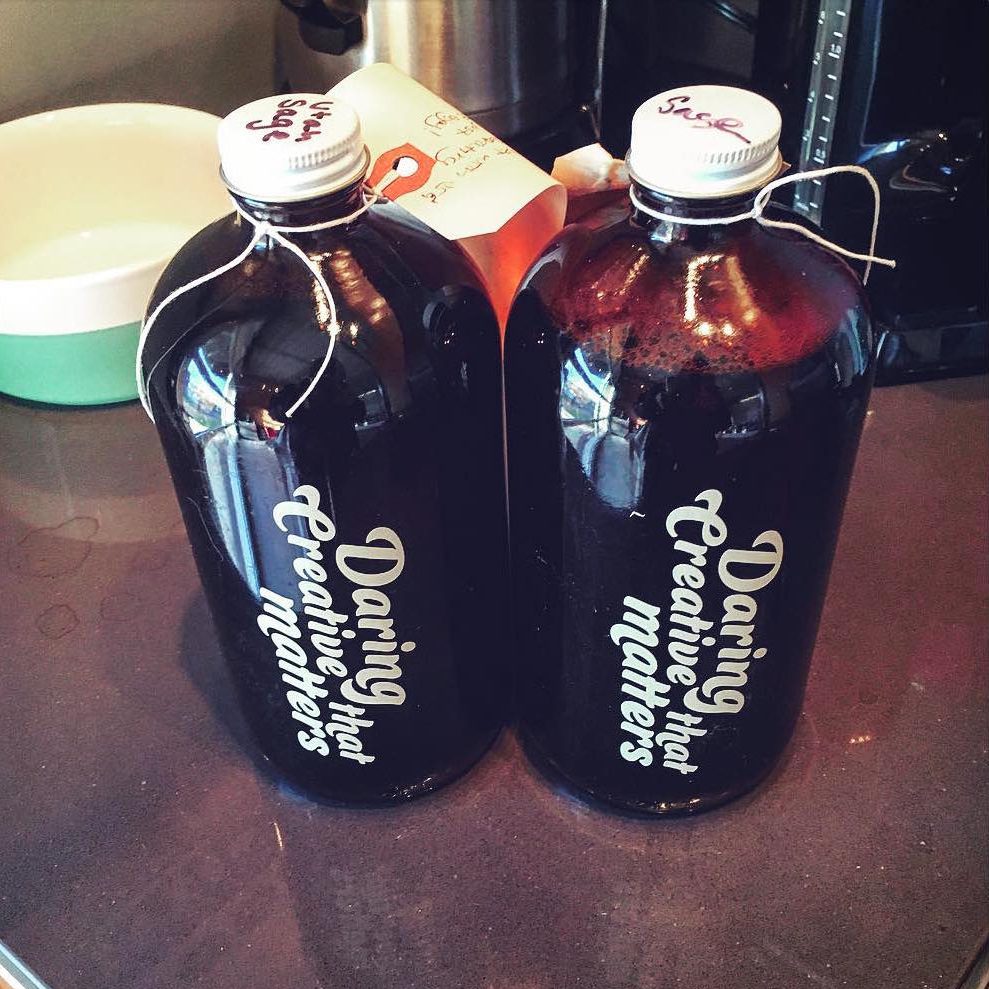

Everyone needs a good drink.
We first started down the path of a spirits-related gift, as the holidays tend to be a time for overindulging – be that in celebration or commiseration! Booze-themed gifts tend to be another expected during the holidays, however, and we knew that some of our more productive clients were trying to clean things up with a healthier start to the New Year this year. This posed the question: should we play the role of the ‘bad influence’ this holiday season?
We decided to leave it up to our clients whether they’d be imbibing or hydrating this year, while we would simply provide the means to an end. We went in search of the perfect tumbler cup to serve any needs, and settled on a sleek, stainless steel rambler to keep your ice water chilled or hot toddy steaming.
To put a D+i spin on the rambler, we decided to design custom leather sleeves for each rambler to sport that not only brought a rustic Colorado feel to the mugs, but also allowed for a *shameless brand plug* for D+i! The process included creating our own custom branding iron with the phrase “Good Influence” and branding the hand-crafted sleeves by hand in the D+i office. Luckily, apart from nearly setting off the fire alarm about a dozen times, we all made it home for the holidays unscathed.
The ramblers were a huge hit with clients, and we are happy to have played a role as a ‘good influence’ this holiday season, whether that meant providing a liquid coat for a Zoo Lights outing or a burst of caffeine before hitting the mountain biking trail.
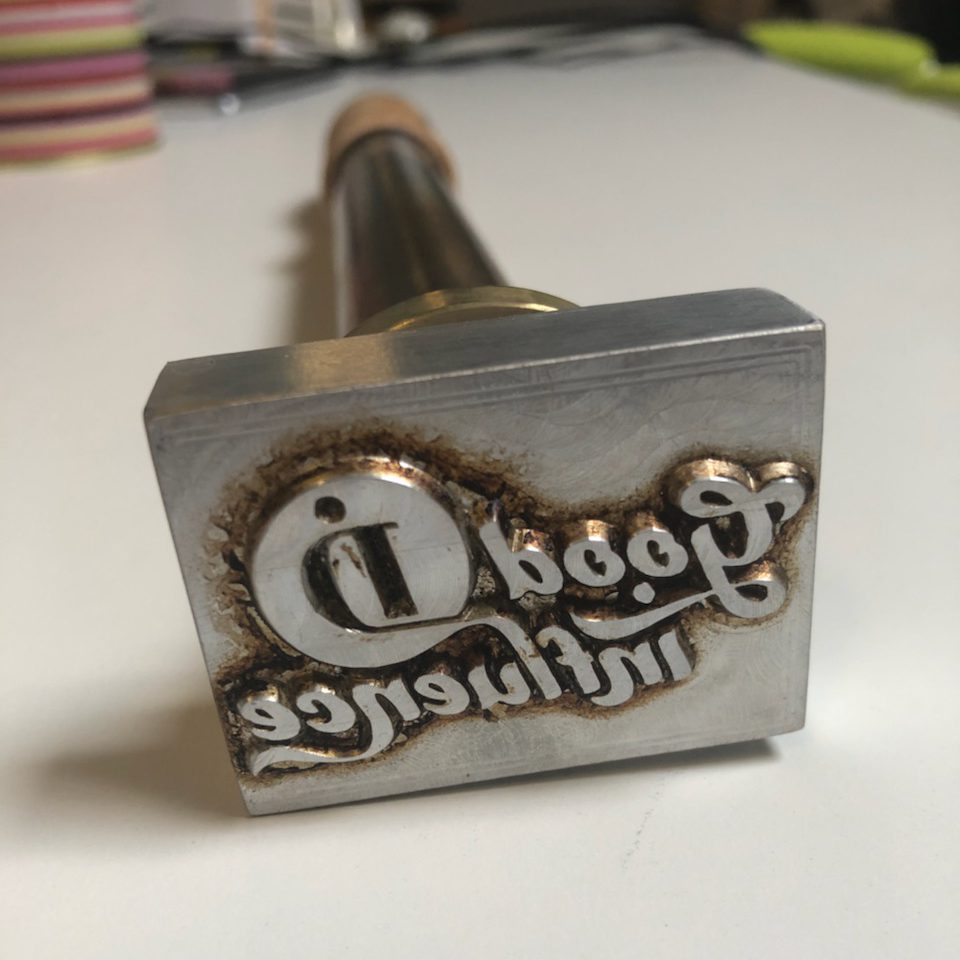



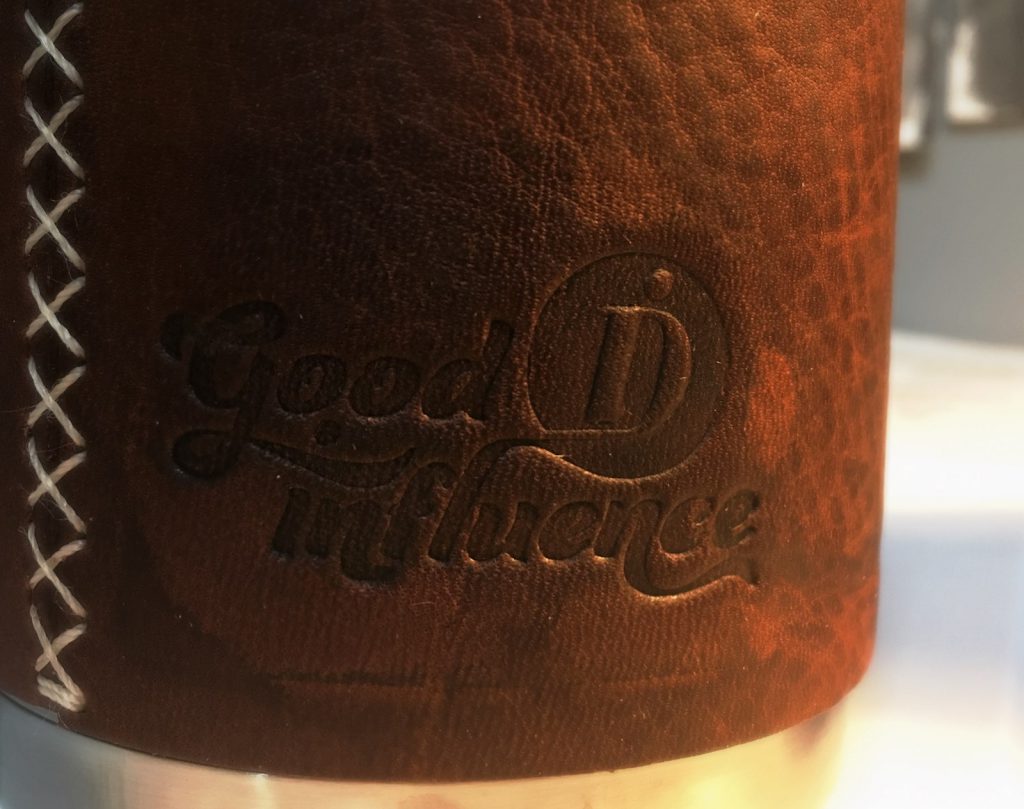
3 Minutes
When The Details Are The Design
Guiding the successful use of a ubiquitous icon.
Born in 1956, refined and simplified through the years, the NBC peacock is a recognized symbol throughout the U.S. and beyond. And while the beautiful forms of the most recent version were created with purposeful intent, time and technology continue to evolve and affect how the icon is used and represented. Not only that, but with an organization as large as NBC the successful management around consistent reproduction of such a signature item is a constant challenge. And that’s where we come in.
D+i was hired by The Arthouse, NBCUniversal Owned Television Station’s internal graphics department, to review their existing files, compare to original documentation of the Chermayeff and Geismar 1986 redesign and bring forward recommendations for formatting, versioning for scale and creating these versions to suit various uses.
We worked in close collaboration with the resident NBC brand agent and logo historian at The ArtHouse to create 3 versions of the mark, each utilizing finely tuned negative spaces and adapted primary forms within the mark to define a balance between increased legibility and preservation of original intent. After several iterations, final versions of these files combined with recommendations for their use (based on media type and size) were delivered and wrapped into a formal guide to be distributed to stations under the NBC umbrella.
For design nerds this falls under the category of visual neuroticism at its finest. For the average viewer these subtle changes might evoke an increased feeling of quality or instill a brand takeaway that reinforces a level of professionalism for the organization it represents.
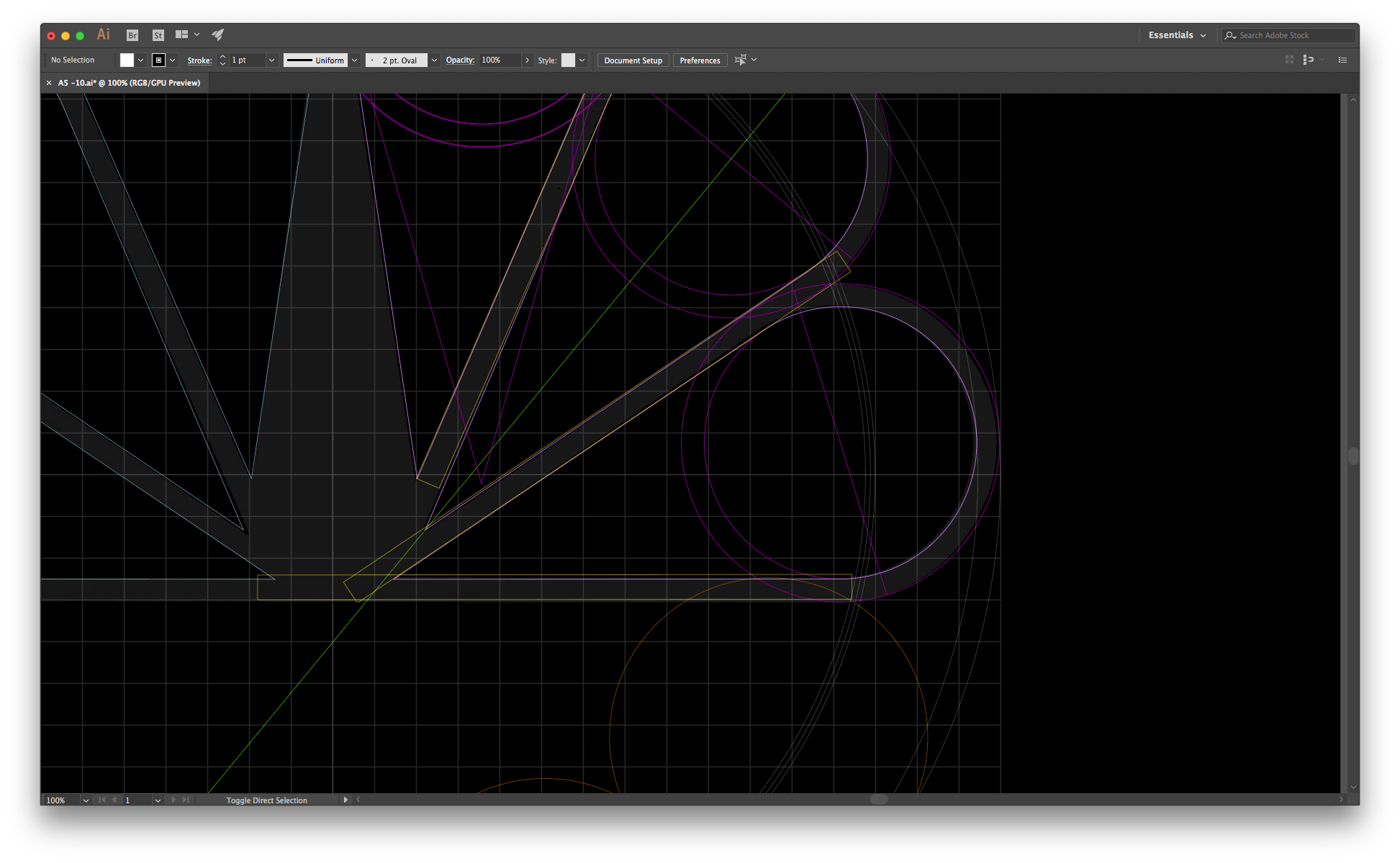

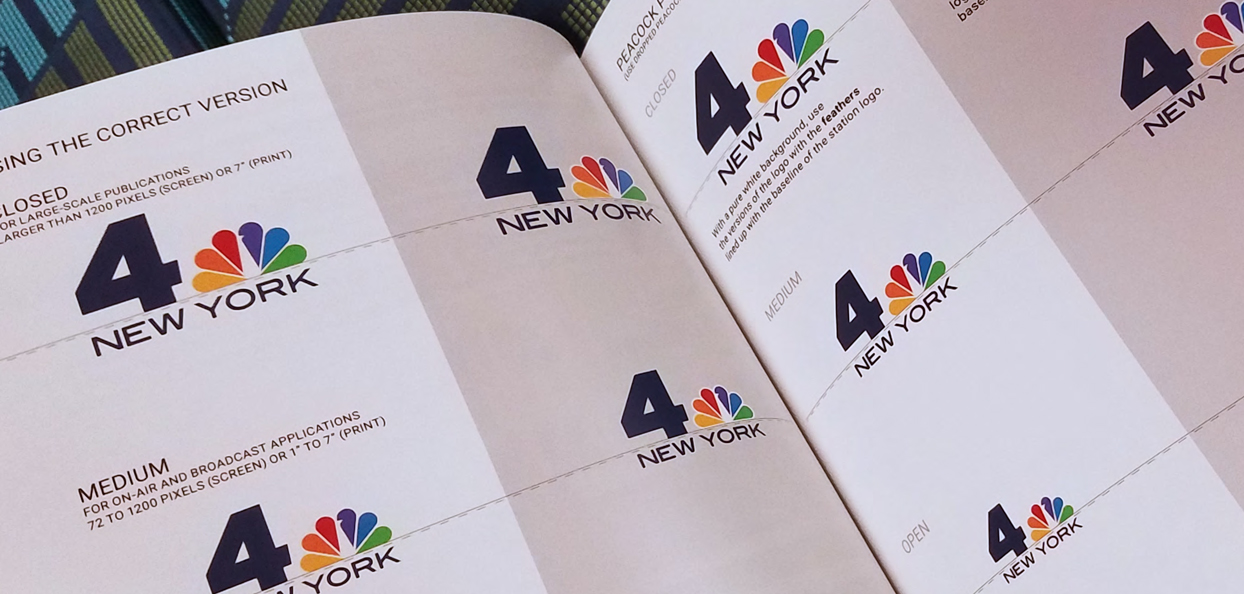
2 Minutes
Expressing the WHY, Not Just the WHAT
Let’s talk about brand
Possibly one of the most overused terms when referencing companies, products, services or public figures.
For our purposes, and specifically as it relates to the B2B space, let’s define a brand as a promise – A promise a company makes to its stakeholders, employees, vendors and clients; A statement which drives every aspect of business, marketing, sales and inter-office relations; The indelible impression which is created with every interaction the aforementioned group of people has with a company. This promise reflects why any one of those people should care at all about your company, your services or your worth. Suffice it to say, it’s pretty important.
A few examples:
• Slack – Simple is better.
• Dove – You are beautiful.
• Uber – Everywhere for everyone.
Defining that promise, and ultimately the positioning, can be a very difficult endeavor. However, it’s a critical step to achieving a point of competitive differentiation in what is usually an extremely crowded B2B space. So, how do we get there? Let’s examine a couple of key steps in a process typically facilitated by a creative services and brand strategy agency:
1. Understand your audience and their existing perceptions
2. Know your competition
3. Leverage that insight to define your promise and positioning
4. Express the promise
Defining that promise, and ultimately the positioning, can be a very difficult endeavor. However, it’s a critical step to achieving a point of competitive differentiation in what is usually an extremely crowded B2B space.
Audience insight
Understand your audience and their existing perceptions.
Let’s face it, business to business is a relationship business. For B2B sales, the “Who” is often more important than the “Why.” We cultivate new clients and partners through referrals, events and gatherings. We meet, we greet and try to engage with executives and decision makers that clearly need our services. In order to create effective sales and marketing tools, we need to understand who we are trying to talk to and what they desire. This critical first step involves documenting insights about your target industries and audiences, including creating personas for each. It can be especially useful to reach out to current, former and even lost clients to interview and gain an understanding of their perception of your company.
Head-to-head
Know your competition.
In most cases, your B2B company is competing with a sea of similar businesses offering similar services. However, if we examine closely, we typically find four to five key competitors that we go up against on a consistent basis. That is because they offer the same services and similar rates to the same target audiences. To differentiate, we must understand each of our competitor’s brand promises and positionings. We can develop an understanding by visiting their websites, reviewing marketing and sales materials, and auditing their design and content to identify gaps. This exercise helps to get a very good understanding of how your competitors are positioning themselves against you to the same audiences.
Find your why
Leverage that insight to define your promise and positioning.
With the prep work done, now comes the exciting part! Armed with the insight gathered about our audiences and competition, we can start to craft our own brand promise and positioning. A common pitfall for B2B companies is to fall back on the company’s services, expertise or staff as a way to define their promise. Here are some example statements for a phantom commercial accounting firm using that technique:
• Impeccable accounting.
• Decades of experience.
• Expert knowledge.
Each of these examples leverages the least differentiated aspect of this accounting firm. Any commercial CPA could boast the exact same things. To get a truly simple and powerful statement we have to look deeper and ask harder questions. What do we believe as a company? How do our clients feel about working with us? Why do we come to work every day? Answering these questions starts to help us define a promise; something powerful and meaningful that clearly separates us as a company. Bearing this in mind, here are some improved suggestions that could better differentiate for the same firm:
• Our customers’ foundation.
• People first. Numbers last.
• Delight in our customers’ success.
These examples put the client first. They define why the firm exists and provide a sense for the feeling a client will have with them. These are the statements which start to differentiate a B2B company and provide direction for marketing and creative teams to create effective sales communications.
A common pitfall for B2B companies is to fall back on the company’s services, expertise or staff as a way to define their promise.
Daring creative that matters
Express the promise.
With a thorough understanding of our target audiences, key competitors and a powerful promise, you can effectively design an expression of your company. Providing these assets to your creative partner is essential to their success.
At D+i Creative, we develop an Expression Platform. This is a holistic approach to creating the verbal and visual definition of the positioning. We explore color, typography, identity, photography, messaging and illustration across multiple marketing collateral to get a complete sense for how the brand will create a unique, yet unified experience across different platforms. While a brand guidelines document creates consistency in application, an Expression Platform creates the foundation for differentiated and effective marketing communications.
Conclusion
So what’s your why? Your promise? The reason your company exists? The answers to these questions are at the heart of your true point of differentiation. Start with this simple truth and let it inform and give meaning to everything the company does, from hiring to sales.
7 Minutes
Content: King or Killer?
TLDR
Limiting what you write can often be key to a better brand experience.
The SEO folks are going to hate me for this one, but in the case of impactful brand experiences less is often more. Great design experiences are all about simplicity, ease of understanding, and lasting impressions. Apple exemplifies how a company can lead the consumer through their entire brand experience with minimal content. From website, to in-store experience, all the way to how their products are packaged. When someone is faced with an overwhelming amount of content to sort through the experience can be less than pleasant and may be memorable in the wrong (think verbose and overwhelming) way.
However, we all know that the Google bots still need something to sink their teeth into – relevant and rich content that drives people to your site. So how do we find a middle ground that satisfies both needs?
Be concise, bold, bullet and have a reason for everything
Hierarchy and communication structure is essential to keeping the viewer interested. As opposed to writing long-winded, run-on sentences of filler and fluff it’s important to ask yourself: what is the purpose of the piece – is it to inform and educate? What are you trying to get the reader to do – be driven to a specific action? What should they walk away with – renewed awareness of the brand?
In today’s society the public is familiar with their content being delivered in small bite-sized chunks. Use this knowledge to guide your writing and help break down a lengthy and potentially unreadable article into something they can absorb. Something that tempts the reader into viewing, allows them to engage at a level that suits them, and ultimately gives them something to walk away with.
Another guideline is to utilize an appropriate amount of content per the medium you are operating in. Twitter vs. email. Website vs. banner ad. Brochure vs. billboard. Each medium has a different purpose with a different length of engagement from the reader and should be utilized as such. Using the right messages in the right places can direct your client through the communications path in the most beneficial way.
Hire a copywriter
Good writing not only captures and maintains audience attention, but also consistently delivers on and reinforces the tone of your brand. D+i often creates messaging suggestions and tone guidelines as a part of an overall brand guidelines document, but it is essential that these attributes are applied in a smart and consistent way to establish a strong brand voice.
If you don’t have the ability to do this in house it’s smart to hire someone to do it for you and do it well. Whether the need is to maintain an online voice across social media platforms or to establish structure and tone through a brochure or your website copy, having someone on board who is intimately connected to your brand voice will ensure successful copy that tells the right story while delivering on your brand promise and marketplace differentiators. Copywriters can come in many forms; from an independent contractor with specialization in an industry vertical to a social media content creator within a PR firm and everything in between. Be sure to choose the appropriate match for your need.
Succinctly put
To avoid the risk of making my own mistakes I’ll wrap this up and leave you with this. Good content is always better than more content. Hire the right people. Be thoughtful, purposeful and leave your audience wanting more.
4 Minutes
Propelling the outdoor industry
As a company based in Denver, our team is comprised of a melting pot of outdoor enthusiasts.
From mountain biking and skiing to rock climbing and fly-fishing, our team members embrace the Colorado stereotype of maintaining an active, outdoor lifestyle in our 300+ days of sunshine each year.
As such, we are always eager to work with brands who share our passion for the outdoors. These brands share the challenge of solving an unanswered problem for outdoor enthusiasts. We partner with them to help identify and verbalize the problem and design a path to communicating its solution.
BikeDenver is a membership-supported organization that advocates for bicycle safety, accessibility and education across the Denver community. The organization recognized the need for Denver bicyclists to have a platform to discuss issues, share knowledge, and advocate for change. We partnered with BikeDenver to conceptualize a brand identity, positioning and tone-of-voice that engaged with this community and positioned the organization as a key resource. We then design a user-friendly website where this target audience could collaborate, educate themselves and engage with BikeDenver staff. These efforts fueled an increase in membership numbers and ultimately a continuous improvement of cycling infrastructure in and around Denver creating a bike-friendly city for years to come that will encourage individuals to Shift How You Move.

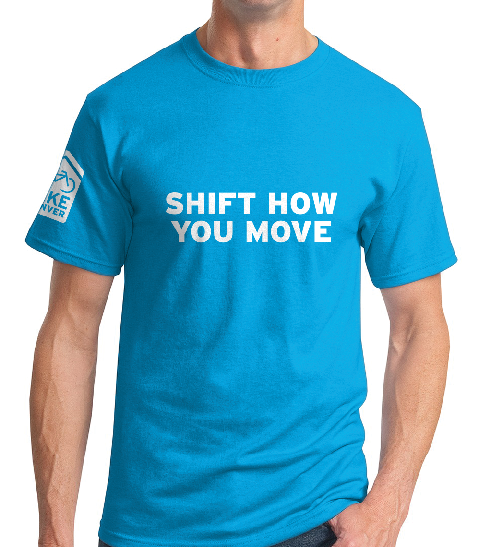
Digitizing licenses
While embracing the outdoors used to be seen as a ‘back to basics’, no frills experience, advancements in technology have spurred more and more outdoor sportsmen and women to utilize gadgets, online resources and applications to improve safety, convenience, and efficiency in the outdoors.
While the outdoor industry continued to be more technology-centric, certain areas remain outdated. Managing hunting and fishing licenses was one of these areas, and the Pursuit team recognized this. Hunters and Fishermen were still tasked with carrying physical copies of their licenses when in the field and organizing licenses by state as well as expiration date. The team at Pursuit approached us with the idea for a mobile application where electronic copies of these licenses were stored. We approached this engagement by first developing an understanding of the target audience. We realized that users needed to not only store, but organize, manage and renew licenses on a regular basis. We approached UX design for the mobile application with this need in mind, ensuring it was simple, intuitive and easy to navigate with the tap of a finger.
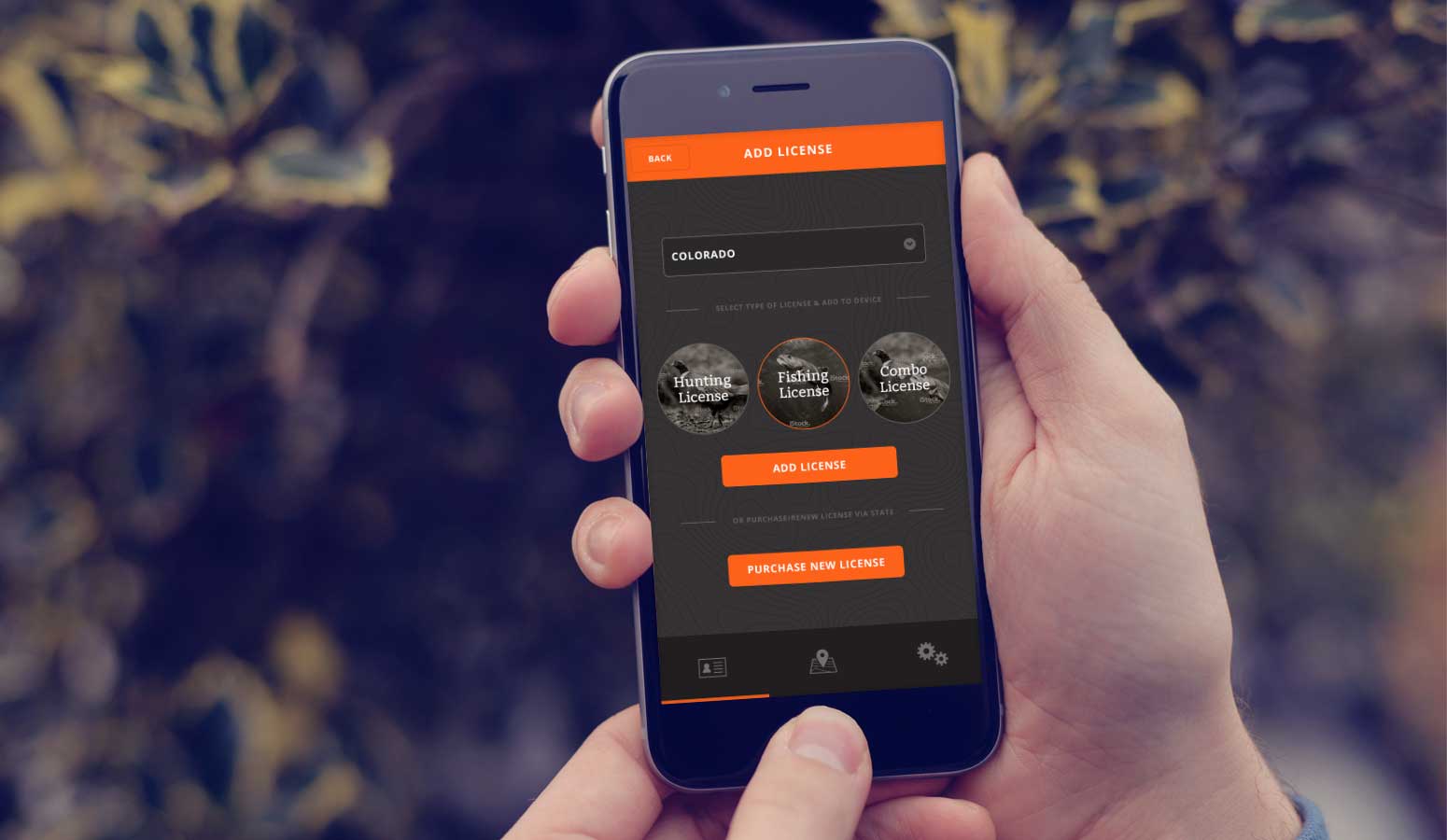
Sharing adventure
Trekz approached us with an idea for a mobile application that created a space for outdoor adventurers to come together and share their experiences with like-minded users.
While certain mobile apps offered a tool for mapping the location of a hike or sharing photos from a journey, there was a void for an application which connecting photos with GPS coordinates as well as a first-hand story account. We collaborated with the Trekz team to build off of this need. We knew our target audience not only wanted to share their adventures, but also experience the journeys of others in a story-like fashion. We designed the application to present information like a magazine article, using editorial design cues to encourage users to immerse themselves in the journeys of others in an exciting and interactive way.
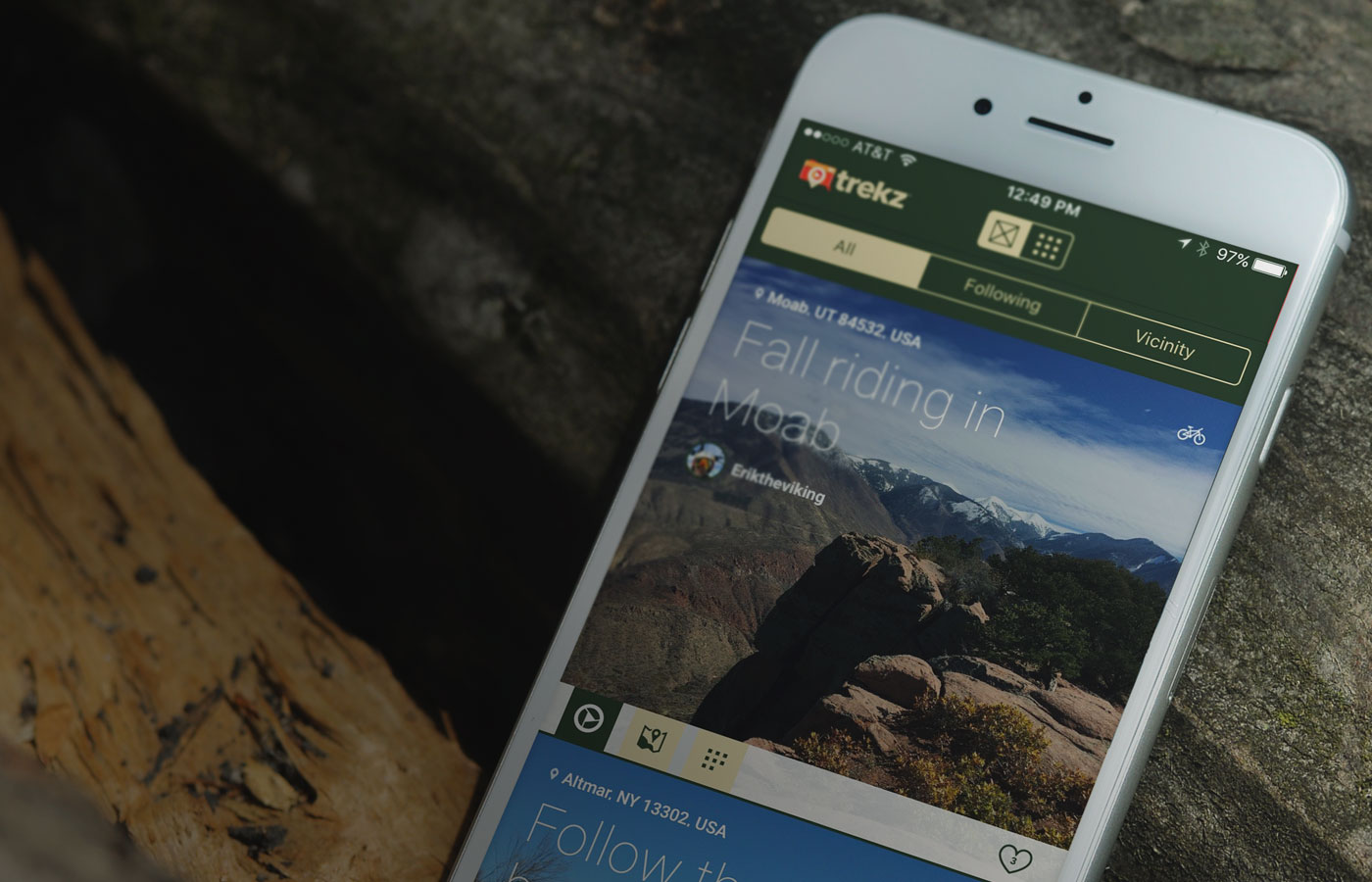
Funding fish habitat
The National Fish Habitat Partnership (NFHP) is a government entity funded by the Division of Fish and Wildlife. NFHP oversees fish habitat partnerships across the country, however the government funding it receives is not enough to effectively fund the 19 partnerships it manages.
NFHP came to us with the need to generate additional funding sources that could serve as an additional funding source for the individual partners. After conducting stakeholder interviews, we determined that a separate, branded funding entity was needed that communicated how funds were allocated and emphasized how these funds were used – specifically on the conservation and ecosystem health level. We conceptualized a name and identity for the funding entity – Beyond The Pond – whose message was that aquatic ecosystem health – from fish to wildlife to chemical makeup – was essential to the population as well as wildlife. The Beyond The Pond brand proved to be hugely successful in securing new funders and generating awareness.
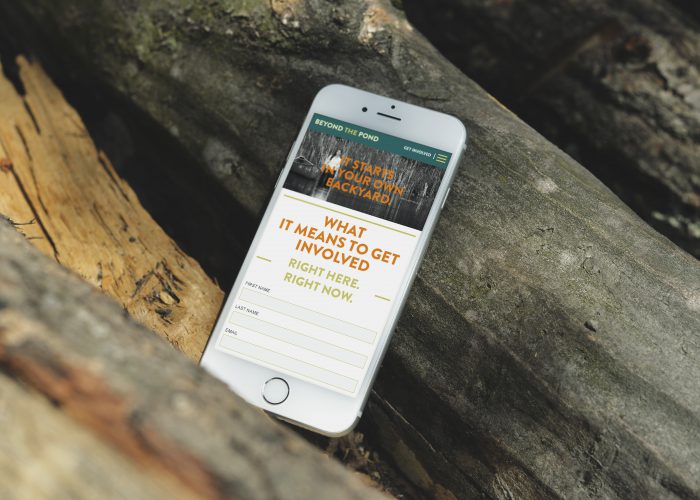
Innovating the outdoors
Whether it be a non-profit organization, mobile application or retail brand, the outdoor industry continues to draw interest and support across the globe, and brands are looking for innovative ways to engage with users and improve outdoor adventures and experiences. We take pride in partnering with them to accomplish this, and seeing the final product in action when we’re playing outdoors in the diversity of our own Colorado backyard is the ultimate reward.
6 Minutes
A Dynamic Environmental Experience
From first impressions to lasting impressions.
D+i was tasked with the challenge of updating the environmental graphics throughout the Denver Performing Arts Center space. Through creative exploration and collaboration with the Arts & Venues team we settled upon a solution that utilized custom typography to reflect the use of the multiple theaters within the space.
Words that reflect the primary residents of the space, and the nature of the events that occur here were styled in a way that visually describe the movement and dynamic impressions that an attendee would experience, employing multiple bold colors to create an energized and modern stained-glass effect. The graphics are applied across the majority of glass surfaces within the complex, from the parking garage where attendees first enter, to storefronts and throughout the interior to tie together this shared arts space in a cohesive way.
D+i took this large-scale challenge in stride, organizing the process with site visits and planograms to ensure variety in form, message and accuracy in final application, as seen in the time-lapse video of the install (after the images below).
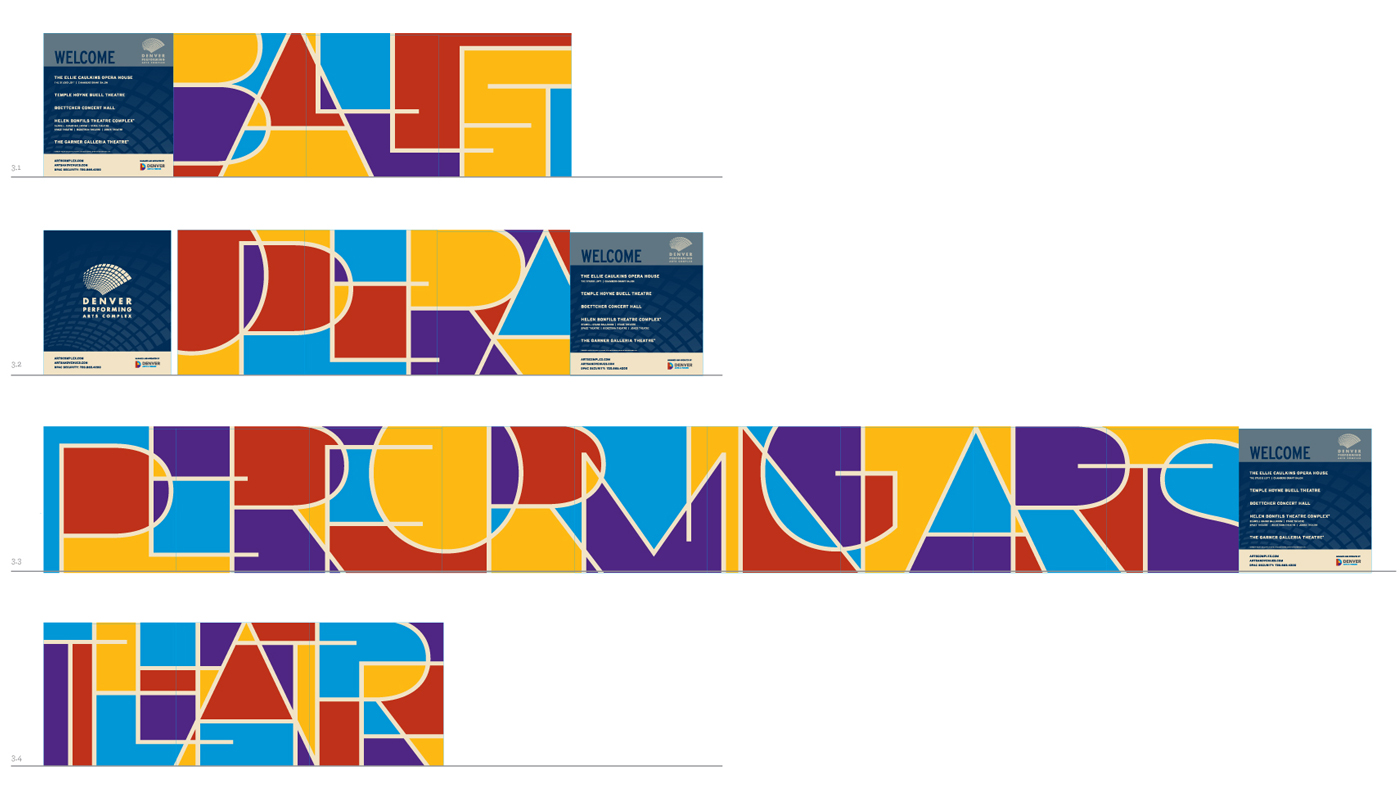




1 Minutes
How to select a brand agency
Selecting a branding agency to trust with the future of your brand can be a lot like dating
Everyone puts on their best face in the early stages, but as the relationship unfolds it can uncover some issues that become deal breakers down the line. It is important to identify exactly what you are looking for in an agency partner, and ensure that these expectations are shared. Often, misalignments between client and agency are revealed early in the selection process, whether realized or not. With that in mind, we’ve outlined some red flags to be aware of in evaluating a new agency relationship.
1. Agency fails to conduct preliminary background on brand
While detailed research and background is often conducted during the Discovery stage of a project, an agency should come prepared with a high-level understanding of the client. If this agency truly aspires to win your business, they should be versed in basic company information, history, and positioning. Failing to do this initial preparation suggests they are not taking an interest in the company or product, or necessarily even excited about the project, only pointing to more issues down the line.
2. Client narrows agencies based on industry expertise
This one’s on you. Very early on in the selection process, brands can limit themselves by only considering firms who specialize in their industry segment. While there are certainly advantages to having experience in the space, it is important to evaluate based on agency capabilities and experience. If you are looking for an expert to design a hotel booking app, you should look for an agency with a great track record for mobile application design, not a creative agency who works solely in the hospitality space with a couple of app design projects in their portfolio.
3. Agency takes a cookie cutter approach to design
No two brands are alike. While there are certainly similarities within a competitive marketplace, brands rarely want to mimic a competitor. Case studies from past projects can give insight into project strategy and approach. That being said, if an agency takes a templated approach for design with no customization across clients, this firm is not invested in your brand. It is important to know they are entering new engagements with a fresh set of eyes, so to speak. No two business models, products, or target audiences are alike.
4. Agency doesn’t provide a primary contact
Having a project manager who owns your project is essential to a smooth design process. Balancing multiple contacts within the agency, as well as within your company, can be tedious and lead to inconsistencies as well as miscommunications. It is key for a firm to outline early on that you will have one primary contact. This doesn’t mean that you won’t have access to the lead creatives, it simply guarantees a seamless flow of the project as well as communication both internally and externally.
Selecting the right creative agency can be a convoluted process. Being mindful of certain red flags can help to eliminate troublesome agencies early on rather than discovering down the road that the relationship was never meant to be.
4 Minutes
McNichols Building Grand Reopening
The historic McNichols Building’s grand reopening
In 2012, D+i partnered with Denver Arts & Venues to create a refreshed identity, signage and online presence for the historic McNichols Building’s grand reopening. The new identity and brand expression combined the most iconic architectural element of the building with modern typeface, color palette and a unique play on negative space. The website connects users with information about the history of the building as well as up-to-date information on upcoming events, programing and exhibitions.
Last year, the McNichols Building was temporarily closed for a reconstruction project to create additional courtyard and event space. Denver Arts & Venues enlisted our help once more to create a series of assets to announce the upcoming building reopening on September 15th.

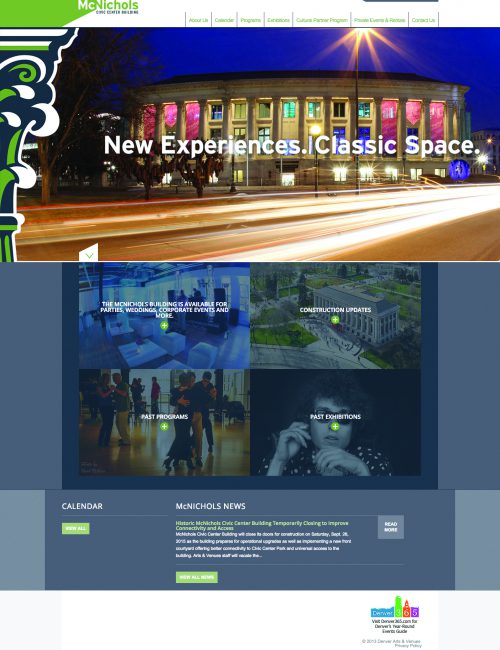
1 Minutes
Designing Differentiation
ENGAGING WITH USERS IN A MEANINGFUL WAY
As a general rule, every brand believes that their product, service, concept, etc. is different or novel within its market in some way.
That being said, few brands effectively communicate this point of differentiation in all aspects of brand expression. This may be due to poor messaging and communications, a disconnect in online presence, or simply an ineffective brand strategy from the get-go.
The key to effectively engaging with users in a meaningful way starts with a comprehensive understanding of this point of differentiation and what it means to an audience. As mentioned in our blog The Importance of Understanding User Empathy, we explain how user stories, personas, and workflows ultimately guide the design process. An understanding of the user alone, however, does little to drive action or increase awareness. A clear point of differentiation must also be identified, defined and communicated to the audience in all aspects of expression.
We worked with Pursuit to design a hunting and fishing licensing app for avid outdoorsmen. During the Discovery phase, we identified a key differentiator in the Pursuit app – it allowed users to not only store their licenses digitally, but also organize multiple licenses by activity and state, and even renew those licenses directly within the app. This answered an unmet need for modern hunters and anglers – specifically millennials – who needed a more efficient way to organize licenses. We focused on this feature in crafting the Pursuit story and utilized beautifully simple UI design to allow users to intuitively navigate throughout the app.
In order to effectively interact with users, brands must not only communicate how they set themselves apart from competitors, but also must implement meaningful design which further emphasizes this differentiation and ultimately captures audience attention and incites further interaction.
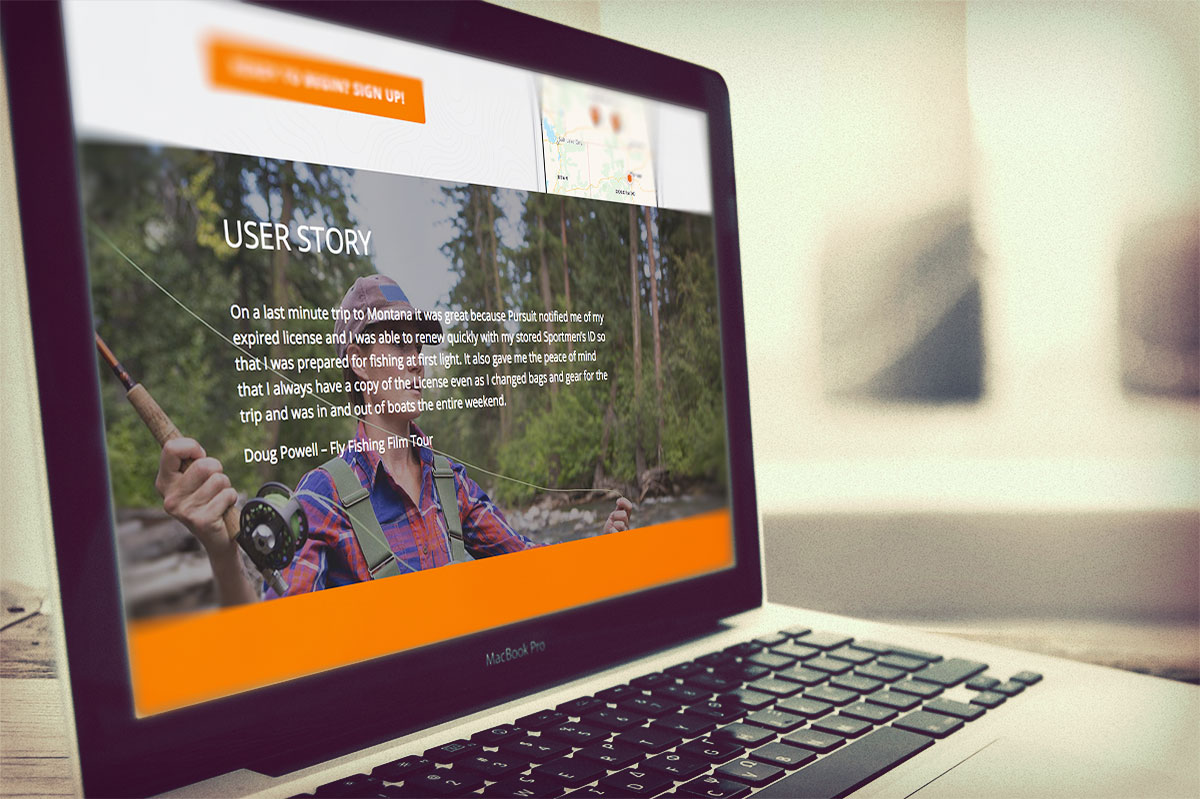
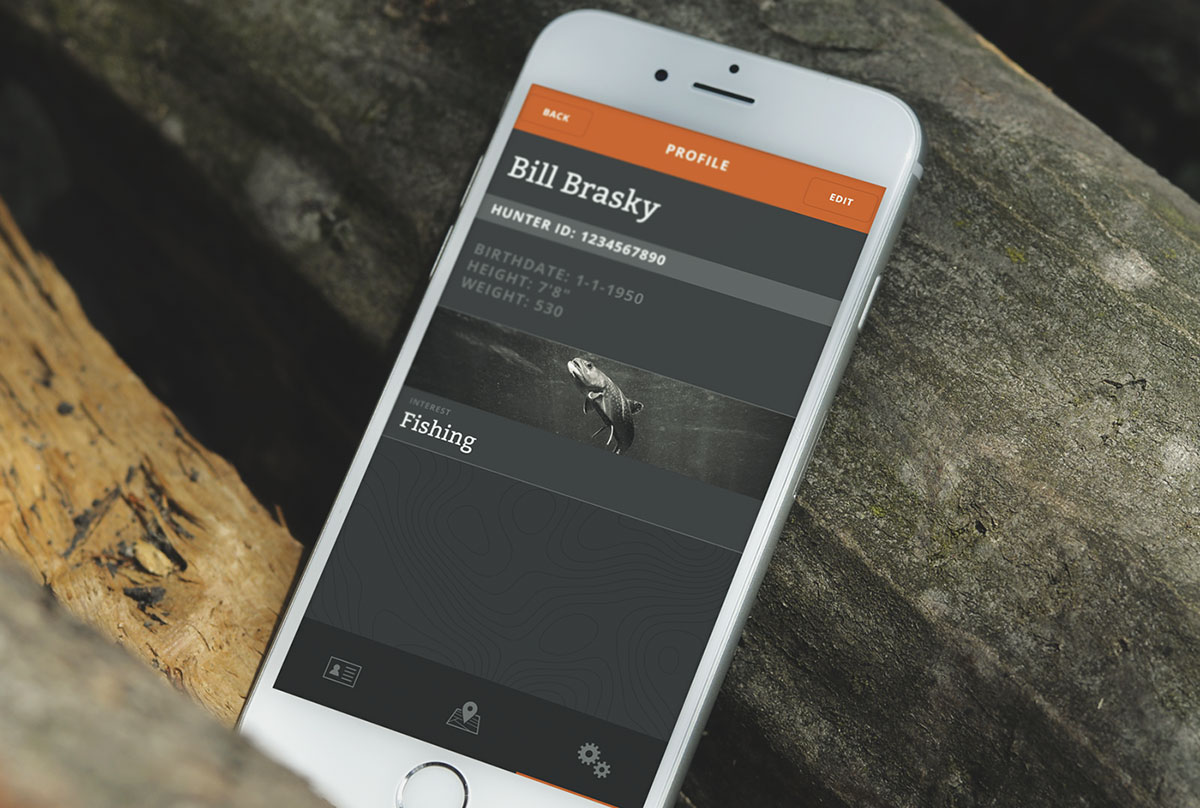
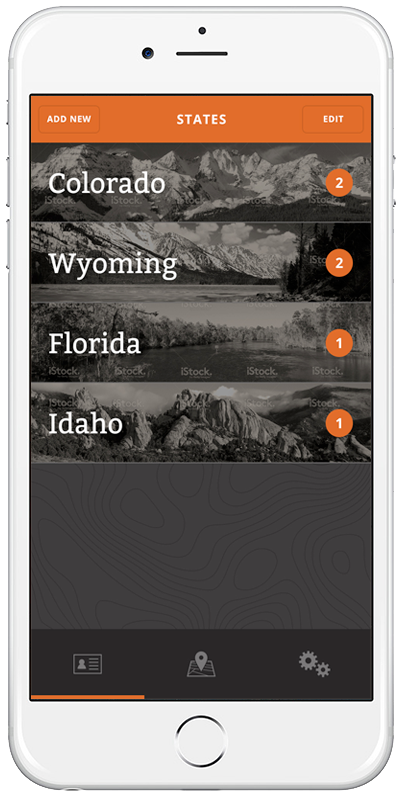
2 Minutes
